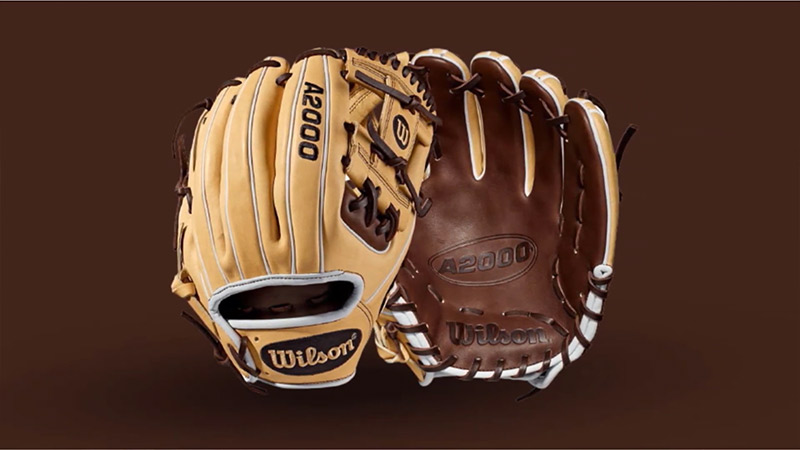Selecting the right baseball glove for an 8-year-old player is a decision that requires careful consideration. As a parent or guardian, you want to provide your child with a glove that fits well, offers quality construction, and promotes their development in the sport.
While inexpensive options may be readily available, investing in a well-chosen glove can make a significant difference in their playing experience. Factors such as size, brand, and ease of use should be taken into account to ensure a comfortable and functional fit.
By exploring reputable brands like Wilson, Mizuno, and Rawlings, you can find gloves specifically designed for young players. This guide aims to provide recommendations and insights to help you make a more thoughtful and informed choice when selecting a baseball glove for your 8-year-old.
So, let’s explore the entire fact extensively.
What Size Baseball Glove For An 8 Year Old?
When it comes to choosing the right baseball glove for 8-year-old, understanding glove sizes is essential.
Glove sizes are typically measured in inches and refer to the length of the glove from the heel of the glove to the top of the index finger pocket. This measurement helps determine the appropriate size for a player.
Recommended glove size for an 8-year-old can vary depending on the child’s hand size and the position they play. However, a common size range for an 8-year-old is around 10.5 to 11.5 inches. This size provides a good balance between ease of use and adequate coverage for fielding.
Factors to consider when determining size include the player’s position and hand size. For infielders, a smaller glove with a shallower pocket is often preferred as it allows for quicker transfers and easier control.
Outfielders, on the other hand, may benefit from a larger glove with a deeper pocket to accommodate fly balls.
The player’s hand size is another crucial consideration. Smaller hands may be better suited for gloves with a narrower finger stall and a shorter wrist opening. It’s important to ensure that the glove fits snugly on the player’s hand without being too tight or too loose.
By considering the player’s position and hand size, you can narrow down the appropriate glove size for an 8-year-old and ensure a comfortable and functional fit for their baseball activities.
Selecting the Right Fit of Baseball Gloves for Kids
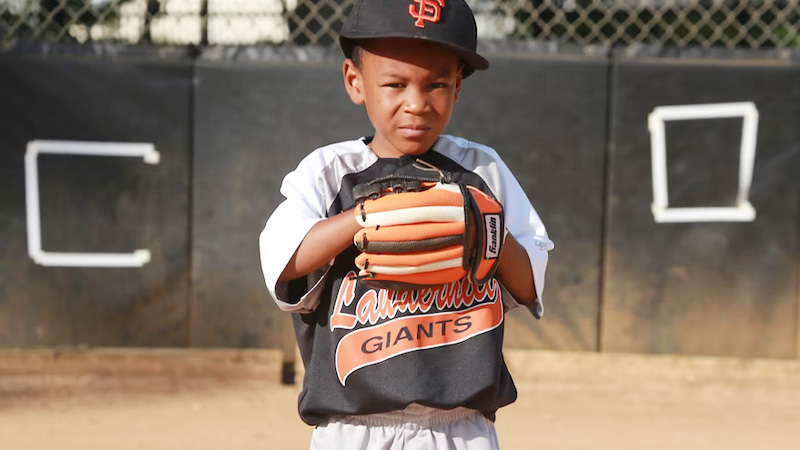
Ensuring a proper fit for a baseball glove is crucial for both player development and safety.
A well-fitted glove allows the player to have better control, feel, and dexterity, leading to improved performance on the field. It also reduces the risk of injuries that can result from wearing an ill-fitting glove.
When looking for the right fit, there are a few options available. One option is to visit a sporting goods store and have the child try on different gloves.
This allows them to feel the glove’s comfort and check how it fits their hand. It’s advisable to bring the child along and have them try on different sizes and models to see which one feels the most comfortable.
If visiting a store is not possible or convenient, measuring at home can be an alternative. To measure the hand size, place a measuring tape or ruler across the palm of the child’s hand, just below the knuckles, and measure from the tip of the index finger to the bottom of the palm.
This measurement can give a rough idea of the appropriate glove size to consider. When trying on gloves or measuring at home, it’s important to check for the right fit.
In this case, you need to pay attention to finger length, as the fingers should extend to the edges of the glove’s finger stalls without excessive room or crowding.
The wrist closure should be secure but not too tight, allowing for easy movement without slipping off. The overall fit of the glove should be snug, providing a comfortable yet firm grip on the ball.
Recommended Brands and Models
When it comes to choosing a baseball glove for an 8-year-old, several brands and models stand out for their quality, features, and value. Here are three recommended options:
Wilson A500
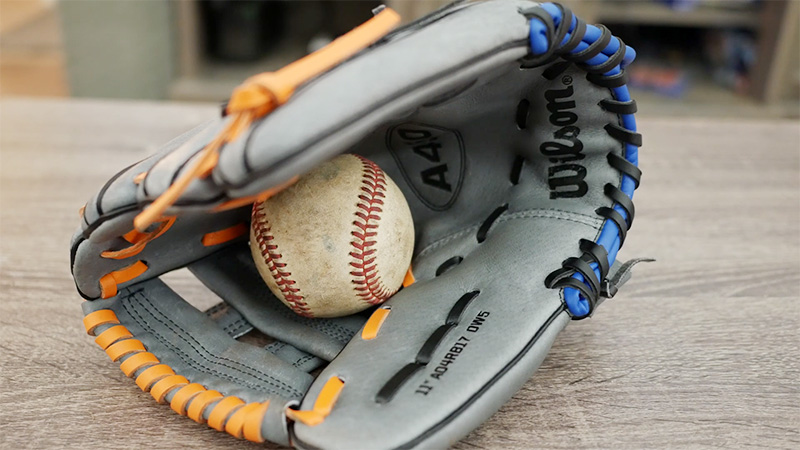
The Wilson A500 series offers a range of gloves suitable for young players. These gloves are known for their quality construction and affordability. The A500 gloves are designed with a lightweight and flexible build, making them easier for young players to close.
They often feature a durable leather or synthetic leather construction, providing a good balance between durability and comfort. The price range for Wilson A500 gloves typically falls between $50 and $60, making them a solid investment without breaking the bank.
Mizuno Power Close
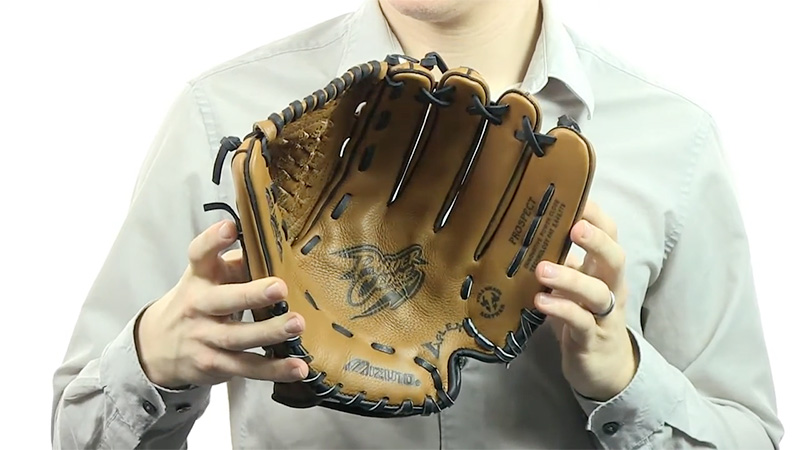
Mizuno is another reputable brand that offers gloves with a “Power Close” feature. This design incorporates a small cut at the palm below the pinkie, allowing the glove to break in quickly and making it easier for young players to close.
The Power Close gloves from Mizuno are constructed with high-quality materials and often have a comfortable feel and excellent durability. They are available in various sizes and price ranges, but typically range from $30 to $40, offering good value for the price.
Rawlings
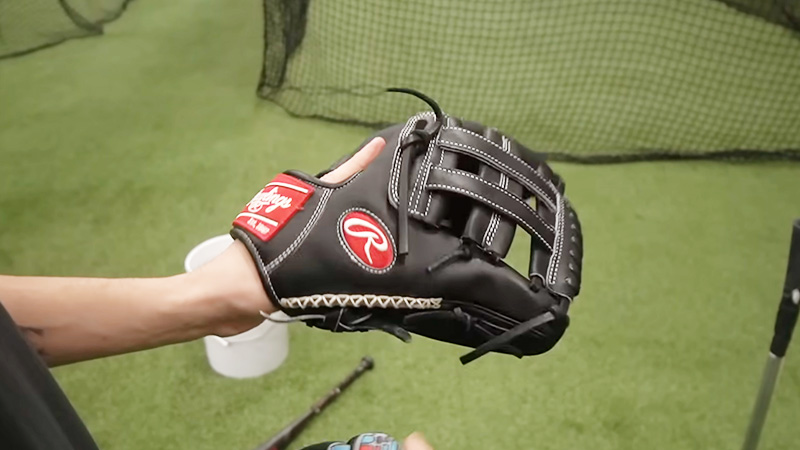
Rawlings is a well-established brand in the baseball world, known for producing reliable and high-quality gloves. They offer a range of gloves specifically designed for young players, often designated as youth or junior models.
These gloves feature features like a smaller wrist opening and a more flexible design, catering to the needs of young players. Rawlings gloves are typically durable and offer good performance on the field.
The price range for Rawlings gloves can vary depending on the specific model and features, but they are generally available in the affordable to mid-range price segment.
By considering brands like Wilson A500, Mizuno Power Close, and Rawlings, you can find gloves that offer a combination of quality, features, and price that are suitable for an 8-year-old player.
It’s always recommended to try on gloves or read reviews to ensure the specific model fits well and meets the needs of your child.
Other Factors to Consider
When choosing a baseball glove for an 8-year-old, there are a few additional factors to consider beyond size and brand. These considerations can help you make a more informed decision and ensure that you get the best value for your money.
Budget Constraints and Value for Money
It’s important to consider your budget when purchasing a glove. While it can be tempting to invest in a high-end glove, keep in mind that young players may outgrow their gloves quickly.
Consider finding a balance between quality and affordability that fits within your budget. Look for gloves that offer good value for money, providing durability, performance, and features that meet your child’s needs without overspending.
Durability and Longevity of the Glove
Since young players tend to be rougher with their equipment, durability is an important factor to consider. Look for gloves made from durable materials such as genuine leather or high-quality synthetic leather.
Reinforced stitching and strong webbing can also contribute to the glove’s longevity. While you may not need the highest-end glove, investing in a well-constructed glove can ensure it withstands the rigors of play and lasts for multiple seasons.
Additionally, you need to check the following factors as well.
- Position: The position your child will be playing can also influence the glove size. Different positions require different glove designs. In general, infielders prefer smaller gloves (9 to 10 inches) for quick transfers and better control, while outfielders may opt for larger gloves (10.5 to 11 inches) for increased reach and better ball retention.
- Webbing: There are different types of webbing patterns on gloves, including closed web, open web, and modified web. The choice of webbing depends on personal preference, position, and the level of visibility desired.
- Material: Baseball gloves are typically made of either leather or synthetic materials. Leather gloves are more durable, provide better grip, and generally offer better overall performance. Synthetic gloves are often more affordable and require less break-in time but may not last as long.
- Fit and Comfort: It’s essential to choose a glove that fits comfortably on your child’s hand. Ensure that the glove is not too tight or too loose, as it can affect performance and control. The glove should allow for proper hand movement and flexibility.
- Adjustability: Look for gloves with adjustable features, such as wrist straps or laces, which allow for a customized fit and can accommodate growing hands.
- Quality: Consider the quality and durability of the glove. Investing in a well-constructed glove from a reputable brand can ensure that it lasts longer and performs better.
- Try It Out: Whenever possible, have your child try on different gloves to see which one feels the most comfortable and allows for easy movements.
Tips for Breaking in a New Glove

Breaking in a new baseball glove is an important step to ensure optimal performance and comfort. Here are some tips to help you break in your child’s new glove:
Importance of Breaking in a New Glove
Breaking in a new glove helps it to mold to your child’s hand shape and become more flexible. This allows for easier closing of the glove and better control of the ball. A properly broken-in glove enhances the player’s confidence and performance on the field.
Gentle Methods for Breaking in the Glove
There are several gentle methods you can use to break in a new glove. One method is to apply a small amount of glove oil or conditioner to the glove’s leather, then use a soft cloth to rub it into the material. This helps to soften and moisturize the leather, making it more supple.
Another method is to use a glove mallet or a softball to repeatedly strike the pocket and outer edges of the glove.
This helps to loosen the leather and promote flexibility. Additionally, using the glove during practice sessions and playing catch regularly can also contribute to the break-in process.
Avoiding Damaging Practices
It’s important to avoid practices that can potentially damage the glove during the break-in process. Avoid excessive heat, such as placing the glove in an oven or using a hairdryer, as this can cause the leather to dry out, crack, or lose its shape.
Similarly, avoid using excessive force or stretching techniques that can cause unnecessary stress on the glove’s materials. It’s best to break in the glove gradually over time, allowing it to adjust naturally to the player’s hand shape and movements.
By following these gentle methods and avoiding damaging practices, you can effectively break in your child’s new baseball glove.
Remember to be patient, as the break-in process can take some time. With regular use and proper care, the glove will gradually become more comfortable and conform to your child’s hand, enhancing their performance on the field.
Recommended Baseball Glove Brands and Models for 8-year-olds
Brand | Model | Features | Price Range (USD) |
Wilson | A500 | Lightweight, easy to close | $50-60 |
Mizuno | Power Close | Quick break-in, easy to close | $30-40 |
Rawlings | Youth/Junior | Smaller wrist opening, flexible | Varies |
FAQs
How do I determine the correct hand orientation for a baseball glove?
Hand orientation refers to whether the glove is designed for a right-handed (worn on the left hand) or left-handed (worn on the right hand) player. To determine the correct hand orientation, consider the child’s dominant hand. If they throw with their right hand, they will need a left-handed glove, and vice versa.
Should I prioritize a lightweight glove for an 8-year-old player?
While a lightweight glove can be beneficial for younger players, it’s also important to consider the balance between weight and durability. Look for gloves that are lightweight but still made with durable materials to ensure they can withstand the demands of regular play.
Can I use a softball glove for baseball or vice versa?
It’s recommended to use a baseball glove for baseball and a softball glove for softball. The differences in the size and weight of the ball require specific designs and pocket depths in gloves to optimize performance. Using the appropriate glove for the specific sport will enhance the player’s experience.
How often should I replace my child’s baseball glove?
The lifespan of a baseball glove depends on factors such as frequency of use, care, and growth of the player. As children grow rapidly, they may outgrow their gloves within a few years.
Additionally, wear and tear from regular use can impact the durability of the glove. Assess the condition of the glove regularly and consider replacing it if it becomes excessively worn, torn, or no longer fits comfortably.
Wrapping Up
Selecting the right baseball glove for an 8-year-old is an important decision that can greatly impact their playing experience. Considering factors such as size, brand, fit, and budget can help you make an informed choice.
Recommended brands like Wilson A500, Mizuno Power Close, and Rawlings offer gloves with features designed for young players, ensuring ease of use and durability.
Finding the right glove for your child can enhance their skills, confidence, and enjoyment of the game. With proper care and maintenance, the chosen glove can accompany them through many seasons of baseball adventures.
Thank you for your time.

